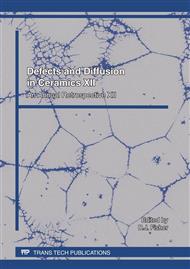p.69
p.81
p.89
p.97
p.107
p.119
p.127
p.135
p.155
Evaluation of the Effect of Catalyst Pore-Size Distribution on the Effectiveness Factor in Ethylbenzene Dehydrogenation by Orthogonal Collocation
Abstract:
The mathematical model for multicomponent diffusion in styrene production is given considering all six reactions involved in styrene production. The diffusion coefficients for catalyst pellet are calculated for unimodal and bimodal pore size distributions using trapezoidal rule of integration. The effects of standard deviation and average pore size on the diffusion coefficient are determined. The differential equations are converted to algebraic equations and solved by the orthogonal collocation method. The effectiveness factor of catalyst pellet in styrene production is calculated for various pore sizes. It is seen that the average pore size and pore size distribution affects the production rate and effectiveness factor significantly.
Info:
Periodical:
Pages:
155-169
Citation:
Online since:
May 2011
Authors:
Price:
Сopyright:
© 2011 Trans Tech Publications Ltd. All Rights Reserved
Share:
Citation:


